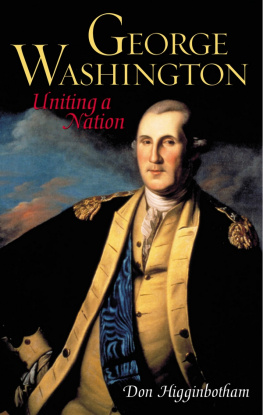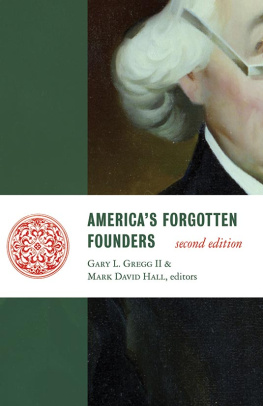Copyright 2001 by the Cato Institute.
All rights reserved.
Library of Congress Cataloging-in-Publication Data
Dempsey, Gary T.
Fools errands: Americas recent encounters with nation building / by Gary T. Dempsey with Roger W. Fontaine.
p. cm.
Includes bibliographical references and index.
ISBN 1-930865-06-6ISBN 1-930865-07-4
1. United StatesForeign relations19932001Case studies. 2. Intervention (International law)History20th centuryCase studies. 3. United StatesForeign relationsDeveloping countriesCase studies. 4. Developing countriesForeign relationsUnited StatesCase studies.- I. Fontaine, Roger W. II. Cato Institute. III. Title.
E885.D46 2001
327.7301724dc21
2001028833
Cover design by Elise Rivera.
Printed in the United States of America.
CATO INSTITUTE
1000 Massachusetts Ave., N.W.
Washington, D.C. 20001
1. Introduction: Fools Errands?
After NATOs 78-day bombing campaign against Yugoslavia came to a close in June 1999, U.S. Secretary of State Madeleine K. Albright toured the Stenkovic refugee camp in northern Macedonia, where 25,000 ethnic Albanians from Kosovo lived in temporary shelters. To great cheers, Albright announced to the refugees, All the world knows about your suffering and now the Serbs have lost control over Kosovo.1 Albright then paid a visit to thousands of U.S. troops preparing to move into Kosovo as peacekeepers. The country you will be freeing has gone through some dreadful times, she declared. I know this is not easy on you. We are deeply honored to have you do this.2 The task at hand would be appropriate, added Albright. This is what America is good at: helping people.3
Several days later, U.S. President William J. Bill Clinton toured the same refugee camp that Albright had. Ethnic Albanians chanting USA, USA and Clinton, Clinton greeted him. With his wife and daughter at his side, the president walked through the muddy camp making family-to-family visits. Stopping to chat with one family, Clinton placed a young boy on his lap and said to the childs parents, We hope with each passing day you will become less afraid. You have a beautiful boy. He is still very much afraid, said the boys mother. He has suffered very much. He has seen people killed and wounded. Surrounded by reporters, Clinton replied, There are some things children should never see.4
Before leaving the camp, Clinton thanked the refugees for sharing their lives with him and his family and declared, You have suffered enough.I dont want any child hurt. I dont want anyone else to lose a leg or an arm or a child.5 He then delivered a short speech in which he echoed Secretary of State Albrights belief that helping people is a U.S. foreign policy priority that America is good at doing: We are proud of what we did. We think its what America stands for We are committed not only to making Kosovo safe, but to helping people rebuild their lives, rebuild their communities.6
But is what Clinton and Albright both claimed while touring the Balkans correct? Is the U.S. government really any good at helping people in troubled places? Americas recent encounters with nation building suggest the contrary. Indeed, Washington said it would bring order to Somalia, but left chaos; it went to Haiti to restore democracy, but produced tyranny; it intervened in Bosnia to reverse the effects of a civil war, but now oversees a peace that is not selfsustaining; and it occupied Kosovo to build a multiethnic democracy, but has instead observed widespread ethnic cleansing. That all these attempts at nation building have not actually solved the problems they set out to address seems not to have bothered the proponents of nation building. But before the reasons behind Washingtons pattern of failure can be explained in more explicit detail, it is first necessary to define the term nation building and its place within Americas post-Cold War foreign policy, especially as it developed during eight years of the Clinton presidency.
Nation Building
Nation building is perhaps the most intrusive form of foreign intervention. It is the massive foreign regulation of the policymaking of another country. The process usually entails the replacement or, in the case of a country in a state of anarchy, the creation of governmental institutions and a domestic political leadership that are more to the liking of the power or powers conducting the intervention. Because such profound interference tends to elicit resistance, the nation-building process typically requires a substantial military presence to impose the nation-building plan on the target country.
The United States is not new to nation building. It concluded the 19th century with a war to liberate Cuba from Spanish tyranny. For the next quarter century, U.S. Marines tried to teach various countries in the Western Hemisphere to elect good men, as President Woodrow Wilson put it. During the 1920 presidential campaign, candidate Warren Harding criticized the Wilson administrations nation-building policies after Wilsons vice presidential running mate, Franklin Delano Roosevelt, boasted that he had written Haitis constitution while he was serving as assistant secretary of the Navy. Harding replied that he would not empower an assistant secretary of the Navy to draft a constitution for helpless neighbors in the West Indies and jam it down their throats at the point of bayonets borne by U.S. Marines.7 When the U.S. government departed Haiti in 1934, according to one Haitian historian, it left some good roads and a few schools, but little democracy.8 It also left a U.S.-trained paramilitary that brutalized the Haitian people and dominated Haitian politics for several decades to come.
After World War II, the United States mobilized extraordinary resources to transform Americas wartime enemies, Nazi Germany and Imperial Japan, into liberal democracies. During the Cold War, the United States undertook nation-building efforts in South Korea, Vietnam, Lebanon, and El Salvador. Since the end of the Cold War, nation-building experiments have been tried in Somalia, Haiti, Bosnia, and Kosovo.
The concept of nation building became a topic of analysis among political scientists during the 1960s, and it was closely linked with the idea of postcolonial modernization.9 Much of the analysis, however, focused on cultivating a sense of national identity in the newly independent colonies, rather than on the formation of the countries themselves. That focus had much to do with the fact that the territorial boundaries and governmental institutions of most of the former colonies were those left behind by the withdrawing colonial powers, so those two elements were often presumed. Still, some analysts questioned the very premise of building new nations. In 1963, for example, Harvard University professor Carl Friedrich pointedly asked, Are nations really built? or, rather, do they grow?10 To be sure, there is one viewepitomized by Machiavellithat holds that nations are built by superior men of heroic stature, but according to Friedrich, the question of reason of state must also enter the picture; that is, what are the concrete historical reasons which require rulers and others to take action in the first place?11 or, to put it somewhat differently: Are nations really built, or do they result because a collective imperative is believed to exist?











